INSIDE: Find kindergarten measurement activity ideas for teaching length, weight, capacity and area using nonstandard units.
Our Kindergarten Measurement Investigations
Every January, we explore the wonders of measurement, diving deep into the concepts of length, weight, capacity, and area, by asking questions, making predictions, and uncovering answers through hands-on investigations and play. Teaching measurement through nonstandard units—utilizing everyday kindergarten classroom objects — makes these abstract concepts accessible and engaging for my curious young learners. Be sure to download your free measurement toolkit at the bottom of the post to find the anchor charts, vocabulary cards, and center task cards I use throughout our nonstandard measurement unit.
Length: A Journey of Comparison
Our journey with length, begins with lots of comparisons and ordering of objects that are similar in length. We line them up, being sure to align each end, and use the vocabulary of shorter and longer to describe the objects.
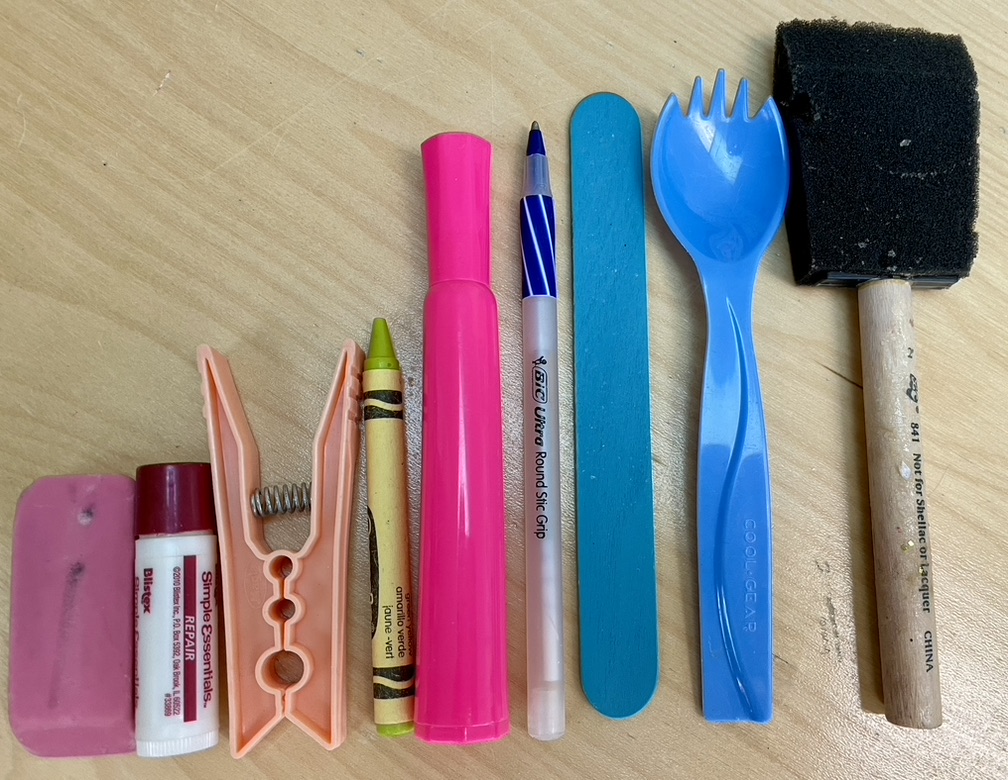
Length Activity Idea: Show children how to make a snap cube measuring stick that equals the length of their foot or shoe. Children can then compare the length of their stick to classmates’ to discover whose foot is longer. Be sure to measure the length of your foot as well – kids love to compare the difference between their own foot and their teacher’s. You can also invite kids to measure their hands and compare them to the length of their feet. Find this activity and more in Length Investigations.
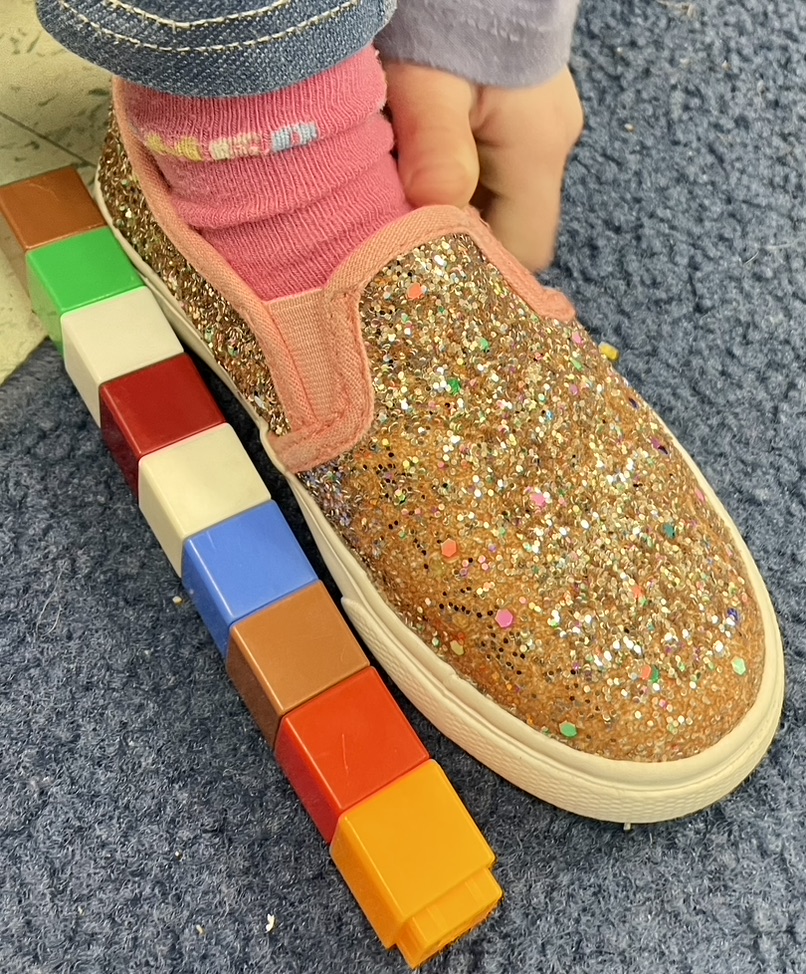
Key Concepts for Measuring Length:
•Consistency: Always use the same type of measurer for one object.
•No Gaps or Overlaps: Make sure your measurers touch but don’t overlap.
•Straight Line: Measure in a line from one end to the other.
Weight: The Scale of Discovery
Weight can be a fascinating concept for kindergarteners, especially because some objects appear lighter or heavier than they actually are. Children begin to see the need to use a measurement tool and really enjoy learning how a balance scale works. Before measuring, we imitate this math tool with our bodies by holding two objects in our hands to compare the weights.
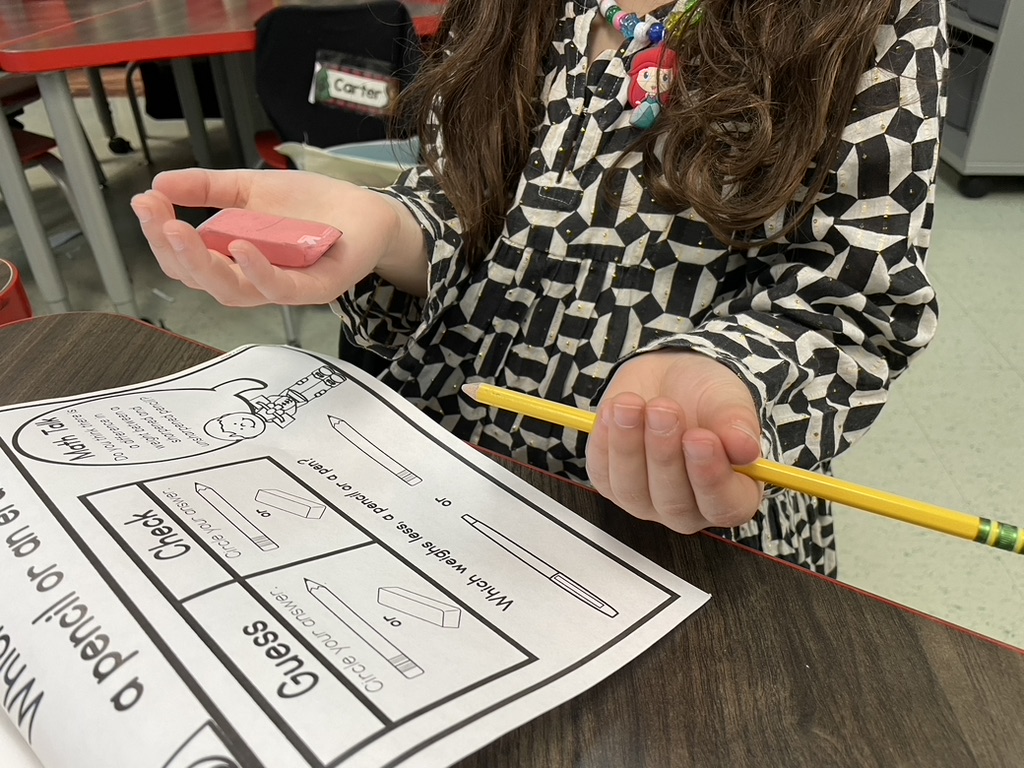
Weight Activity Idea: Challenge children to predict which is heavier, 3 bears or 5 pom poms. Many will pick the pom poms based on the quantity, because 5 is more than 3. Once they see that the pom poms are lighter, work together to find out how many pom poms it will take to equal the weight of the 3 bears. Find this activity and more in Weight Investigations.
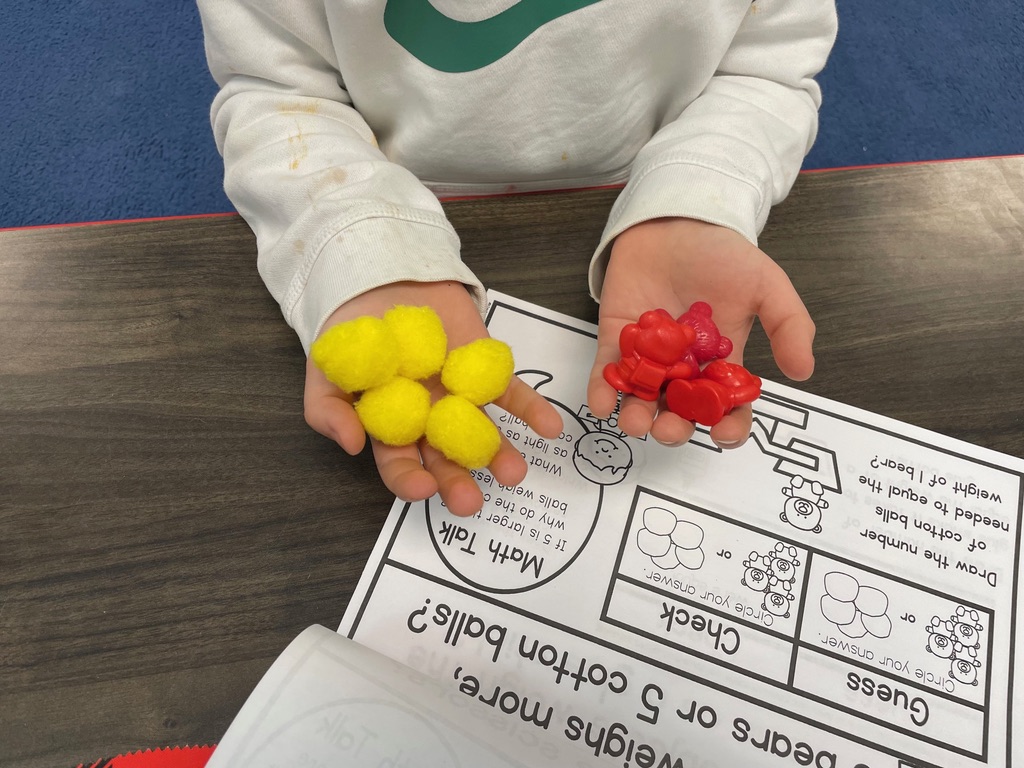
Key Concepts for Measuring Weight:
•Balance: When both sides are at the same level, they are balanced.
•Heavier and Lighter: The side that goes down is heavier. The side that goes up is lighter.
•Equal Weight: When the scale is balanced, both sides weigh the same.
Capacity: Full of Possibilities
Capacity introduces children to the concept of how much something can hold, an idea that can be abstract for young children, but easily made tangible through play. While we are in the midst of our measurement unit, I fill a sensory table or bin with beans (rice, sand, or water work too) and children enjoy dumping and filling different-sized containers as they predict which holds more or less, and then test their hypotheses.
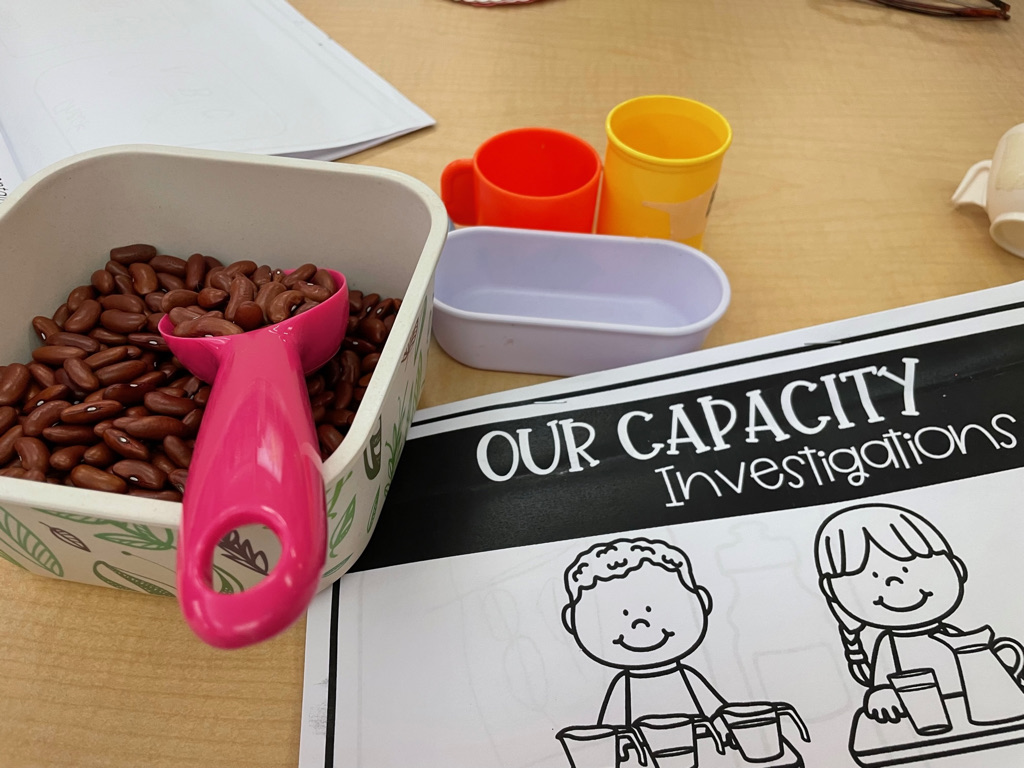
Capacity Activity Idea: Creating measurement challenges that use items that belong to children will always pique their interest! Ask children to grab their water bottles and predict whose holds the most water. Fill the first water bottle to capacity and then pour it into the second bottle. Let children discover that if the water overflows, then the first one holds more than the second and vice versa. Repeat the process with other water bottles to find out whose holds the most. Find this activity and more in Capacity Investigations.
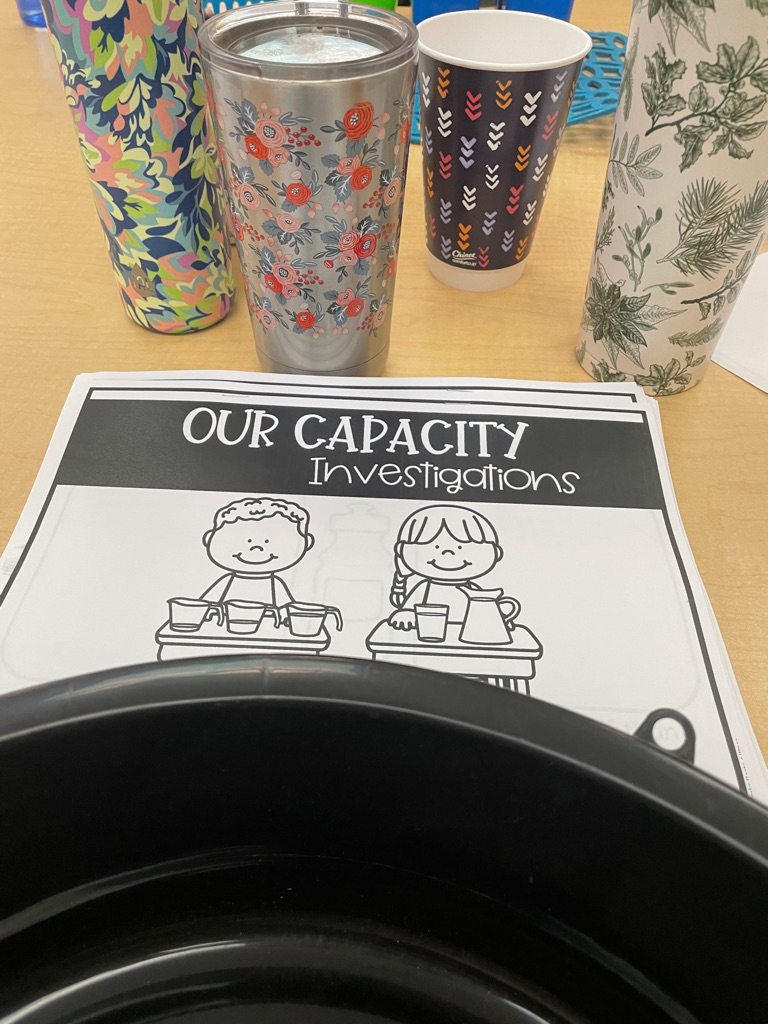
Key Concepts for Measuring Capacity:
•Capacity: Capacity is how much something can hold.
•Comparing Capacities: Some containers can hold more than others.
•Full, Half-Full, Empty: We can use these terms to describe how much a container holds.
Area: Exploring Space and Coverage
Area, the measure of space an object covers, can be a complex idea, but is made simpler by using nonstandard units, such as 1″ square tiles, that children can easily manipulate. We use classroom objects such as sticky notes, index cards, and envelopes for our first area investigations.
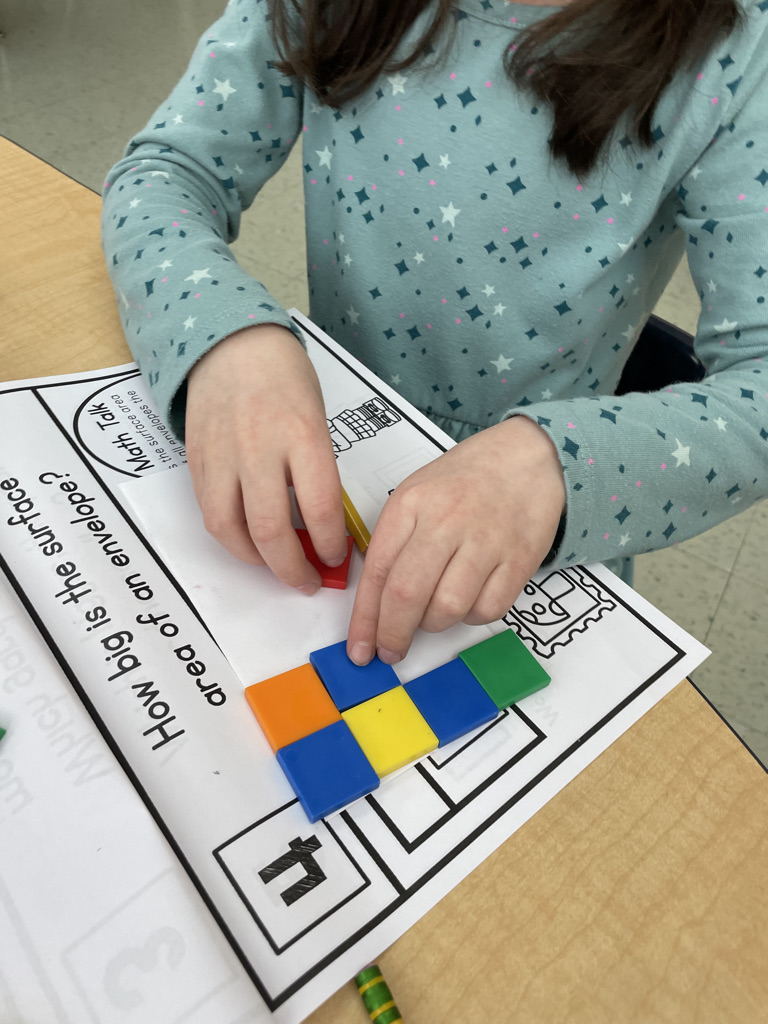
Area Activity Idea: Give children two cut-outs that have the same surface area, but are different shapes, such as a square and a rectangle. Ask them to predict which one has the largest surface area and measure each using 1″ square tiles. Children will be surprised to discover that they are equal! Find this activity and more in Area Investigations.
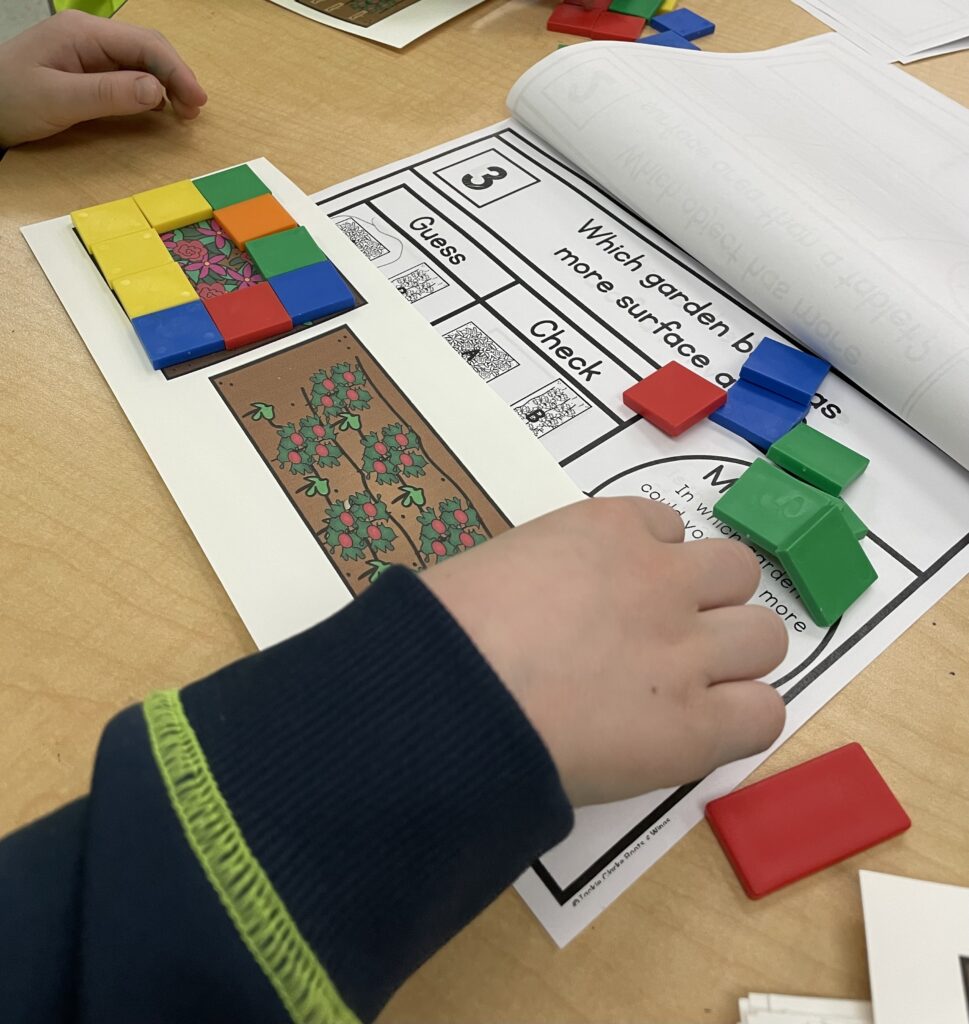
Key Concepts for Measuring Area:
•Area: Area is the space inside a shape or on a surface.
•Measuring Area: We find out an area by counting how many pieces fit inside the shape or on the surface.
•Comparison: Some areas are bigger and need more pieces to cover them. Some are smaller and need fewer pieces.
Kindergarten Measurement Strategies
- Encourage Exploration: Create a measurement station and allow children the freedom to explore and play with measurement as they make predictions and test outcomes. It’s through hands-on, playful activities that they will internalize these concepts.
- Use Relatable Items: Utilize objects from the children’s daily lives to make these lessons relatable and meaningful.
- Incorporate Vocabulary: Introduce measurement vocabulary (i.e. long, short, heavy, light, etc.) in context to help children articulate their observations and understanding. We play Four Corners using the vocabulary of length, weight, capacity and area by posting these labels in 4 corners of our classroom. To play, kids scatter to one of the four corners and one child is the caller who closes their eyes and then names length, capacity, weight, or area. Kids who are in that corner are out of the game and return to their seats. Play continues until only one child is left. That child is then, the next caller.

- Celebrate Discoveries: Every observation, correct or not, is a learning opportunity. Celebrate these moments to encourage a positive attitude towards learning.
Your Kindergarten Measurement Toolkit
Looking back on our month of measurement, I can see that what made it so engaging, was the freedom to explore and guess, the use of simple, everyday items for learning, and the sheer joy of discovering through play. And the “math talk” that we did throughout each inquiry made the investigations rich with learning.
Download this FREE Measurement Toolkit to get you started on your journey with length, weight, capacity and area.

Here’s what you’ll find inside the Measurement Toolkit:
- 4 Let’s Measure Anchor Charts (one for length, weight, capacity, and area)
- 16 Vocabulary and Sorting Labels and Game Ideas
- 4 Measurement Task Cards
- 4 Recording Sheets
For more math ideas, check out the Growing Math Thinkers Page in the Roots and Wings resource library.


 The Curious Classroom Book Study
The Curious Classroom Book Study Curious Classroom Book Study: Investigate Ourselves and Our Classmates
Curious Classroom Book Study: Investigate Ourselves and Our Classmates Curious Classroom Book Study: Learn With Partners and Pioneers
Curious Classroom Book Study: Learn With Partners and Pioneers Curious Classroom Book Study: Begin the Day with Soft Starts
Curious Classroom Book Study: Begin the Day with Soft Starts
Leave a Comment